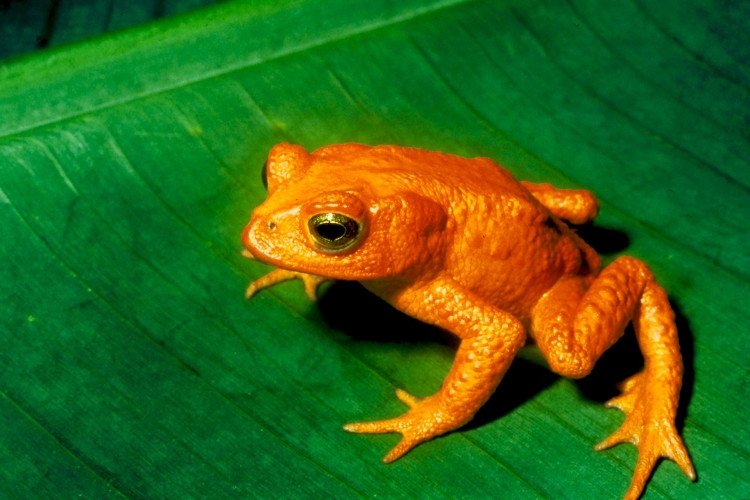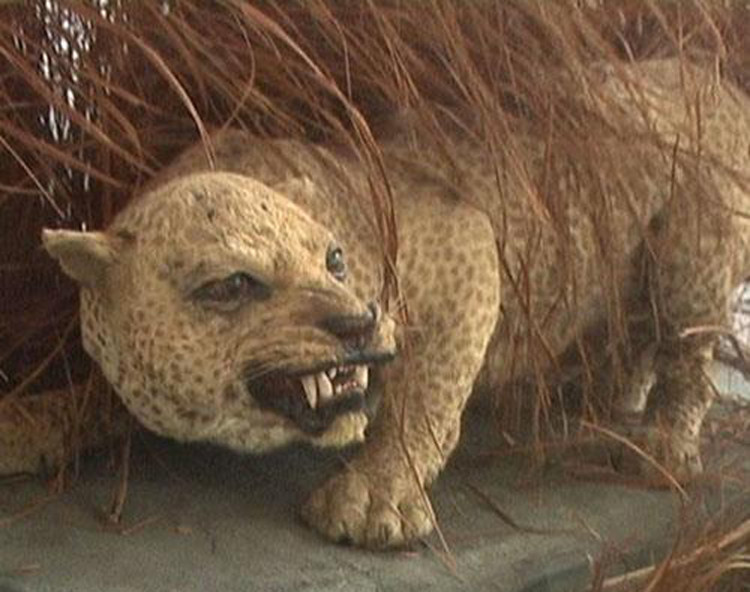The 10 largest natural extinctions since the 1990s
Humans are the main cause behind the extinctions of many animals.
1. Golden toad B. periglenes

B. periglenes is a species of amphibian belonging to the Toad family. This species is abundant in a cloudy rainforest covering an area of 30 km 2 in the city of Monteverde, Costa Rica. This species was first described in 1966 by Jay Savage.
Since May 15, 1989, none of B. periglenes has been recorded anywhere in the world and this species has been ranked among the extinct species by the International Union for Conservation of Nature. . The sudden extinction of this species is thought to be part of the natural decline of the population of amphibian amphibians.
2. Zanzibar Newspaper

Zanzibar newspaper was originally described as a subspecific leopard (Panthera pardus adersi) by Dr. Pocock in 1932. Genetic analysis later in the 1990s, this population was included in the group with subspecies. African newspaper.
The population of Zanzibar was once on Unguja Island in the Zanzibar Islands, part of Tanzania, but extinct completely. The increasing conflict between the people and the Zanzibar newspaper in the 20th century led them to see Zanzibar as a bad animal and seek to destroy it. Efforts to develop a newspaper conservation program in the mid-1990s were abandoned when wildlife researchers concluded that there was little hope for the long-term recovery and survival of the subspecies. this.
3. Madeiran Butterfly

Madeiran butterflies are a large endemic white butterfly of Madeira . It can reach size from 55 to 65mm. The wings are pure white with wide black burns on the back. Their natural habitat is laurel forest. The only specimen of this butterfly was collected in 1977 but during the next 15 years, no more butterflies were found. It may be an extremely rare or extinct butterfly. One reason for the decline of the butterfly may be a virus that infects the Madeira region in the 1950s.
4. Tecopa cyprinodontidae sand fish

Tecopa cyprinodontidae is a subspecies that have been completely extinct. Sand fish that survive and withstand high temperatures are endemic to a hot spring area in California's Mojave Desert. The change of habitat and invasion of non-native species led to the extinction of this species in about 1970.
5. Goat Pyrenean

Pyrenean Goat is also known as Pyrenées Forest Goat. In Spanish, called bucardo, is one of four subspecies of Spanish wild goats (also known as Iberian goats), an endemic species of the Iberian peninsula. Pyrenees are the most popular in the Cantábrica Mountains, in the south of France and in the north of the Pyrenees. This subspecies has been very popular. However, no more Pyrenean mountain goat has been found since the 1930s.
6. West African black rhinoceros

The West African black rhinoceros is a rare rhino subspecies of black rhino that lives in Africa. In 2011, the International Union for Conservation of Nature declared that the West African black rhino was extinct. It used to live in the west central Africa, but was destroyed by poaching.
7. Java Tiger

The Java Tiger is an extinct tiger subspecies, which existed on the Indonesian island of Java. This species is probably extinct from the 1980s, the aftermath of hunting and habitat destruction. Their extinction may have occurred since the 1950s onwards (at that time it was thought to be less than 25 in the wild). The tiger was finally seen in 1979.
8. Tasmania tiger

The Tasmanian tiger is known to be the largest pocket-sized predator of modern times, distributed mainly in Australia and Papua New Guinea 2,000 years ago. They are also known as Tasmanian wolves because of their wolf-like appearance.
The cause of the direct extinction of the Tasmanian tiger is due to human migration. Europeans who migrated to Australia lived, cultivated and reared on the territory of this species.
Farmers who have accused the Tasmanian tiger of attacking their sheep should use various measures to destroy them.
After 70 years of constant slaughter, the Tasmanian tiger almost completely disappeared. The Tasmanian tiger eventually died in a zoo in Tasmania in 1936.
9. Passenger pigeon

Passenger pigeons or forest pigeons are predominantly North American birds. This bird is unique in that they migrate into herds in very large numbers, sometimes up to 2 billion, stretching in an area of 1.6km wide, lasting 500km in the sky.
To survive in nature, this bird faces many threats such as changing temperatures, being eaten by many other animals .
However, humans are the biggest threat to this bird. When Europeans arrived in North America in the nineteenth century, the number of passenger pigeons began to decline due to deforestation and hunting for meat.
The last passenger pigeon named Martha died on September 1, 1914 at Cincinnati Zoo (Ohio State, USA). Today, Martha's corpse is still kept in a museum but not on display.
10. Macaw Parrot

Macaw parrots originated in Mexico, Central America, South America, and formerly the Caribbean. Most species are related to the jungle environment, especially rainforests, but other species prefer habitats such as forests or steppes.
Most parakeets are endangered in nature. Six species are extinct, and the Spix Macaw is now considered extinct in nature. The biggest issues that threaten parrots are the rapid speed of deforestation and illegal trapping.
- Amazing photos of Saigon in the 1990s (Part 2)
- Amazing photos of Saigon in the 1990s (Part 1)
- The 'killer' caused mass extinction 250 million years ago
- Which is the largest natural lake in Vietnam?
- Owl 'compulsive surgery' from space
- In just 25 years, we have destroyed 10% of the wild on Earth
- The largest waterfall ever existed on Earth
- Unexpectedly the size of the largest Moon in the solar system
- Maiombe - Africa's natural wonder
- The world's largest journey through the dark in caves in Vietnam
- The largest animals are extinct
- Video: The world's largest blue topaz gemstone
 Animal 'suffering' after hibernation
Animal 'suffering' after hibernation Why do goats climb well?
Why do goats climb well? Scientists were surprised to see chimpanzees eating turtles
Scientists were surprised to see chimpanzees eating turtles Giant catfish died deadly due to drought in Thailand
Giant catfish died deadly due to drought in Thailand The mystery of giant bamboo, which can be taller than a 10-story building
The mystery of giant bamboo, which can be taller than a 10-story building  Mysterious animals revealed in the deep forests of Vietnam
Mysterious animals revealed in the deep forests of Vietnam  Monitoring natural habitat change from the discovery of 2 new cicada species
Monitoring natural habitat change from the discovery of 2 new cicada species  Surprising number of invertebrate species extinct in Australia
Surprising number of invertebrate species extinct in Australia  Many rare animals discovered in Ke Go Nature Reserve
Many rare animals discovered in Ke Go Nature Reserve  Half-million-year-old treasure from another human species discovered in Poland
Half-million-year-old treasure from another human species discovered in Poland 